A user-centered responsive career site for UNICEF global offices
Task: UX Research; UX Design; Survey Design; Information Architecture; Content Modeling Guideline; Prototyping
Role: UX Researcher and Designer
Challenge
Help UNICEF’s Division of Human Resources design a website to enhance employer branding and recruit top talent worldwide.
Outcome
UNICEF Careers, a user-centered, responsive website that serves as the central portal for candidates worldwide, with an emphasis on communicating workplace culture, finding the right fit, and addressing recruitment gaps.
Problem
UNICEF’s current Employment site serves as the main information source for a diverse set of global candidates. Last year, more than 5 million visitors across 190 countries visited its Employment site, representing 25% of the overall site traffic. However, the current site is not mobile friendly and is difficult to navigate. As part of the organization-wide digital transformation project, I was hired to make the site more “user-friendly” and “engaging”.

Design Challenges
During my preliminary information gathering phase, I tried to collect insights through staff interviews and current databases to answer two sets of basic questions listed in the diagram below. However, I soon realized several key challenges:
1. Data and System: UNICEF’s current Employment site doesn’t have a proper web data tracking system in place; also, the current system databases on candidates and staff are not reliable due to inconsistent manual input practices. In addition, as the Talent Management System is managed by a 3rd-party entity and the system changes are beyond the scope of this project, compromises on the design side need to be made to ensure on-time delivery.
2. Business Needs: Although UNICEF is able to attract a huge talent pool, there is a mismatch between the applicants’ qualifications and job requirements. For certain functional areas, recruiters struggle to find appropriate applications, while for other positions, they are swamped by thousands of applications.
3. Mindset: Most stakeholders focus on improving the visual appearance of the site and overlook its role in bridging the needs gap between candidates and the organization. By presuming UNICEF’s noble mission attract candidates naturally, they also discount the needs to truly understand the underlying objectives and concerns of the candidates.
To guide the stakeholders taking a human-centered view and shape the project discussion focus, I rephrased the project goal into one question: How might we facilitate external candidates identify suitable opportunities and form realistic expectations about working at UNICEF?

Stakeholder Management and Engagement
To navigate UNICEF’s complex organizational structure and to manage different expectations of a collection of diverse stakeholders, I mapped out each stakeholder’s ideal engagement level using the matrix below. Despite the short duration of this project, I had separate in-person interviews with every main stakeholders and presented working progress bi-weekly to a 20-person global task force through one-hour long meeting.
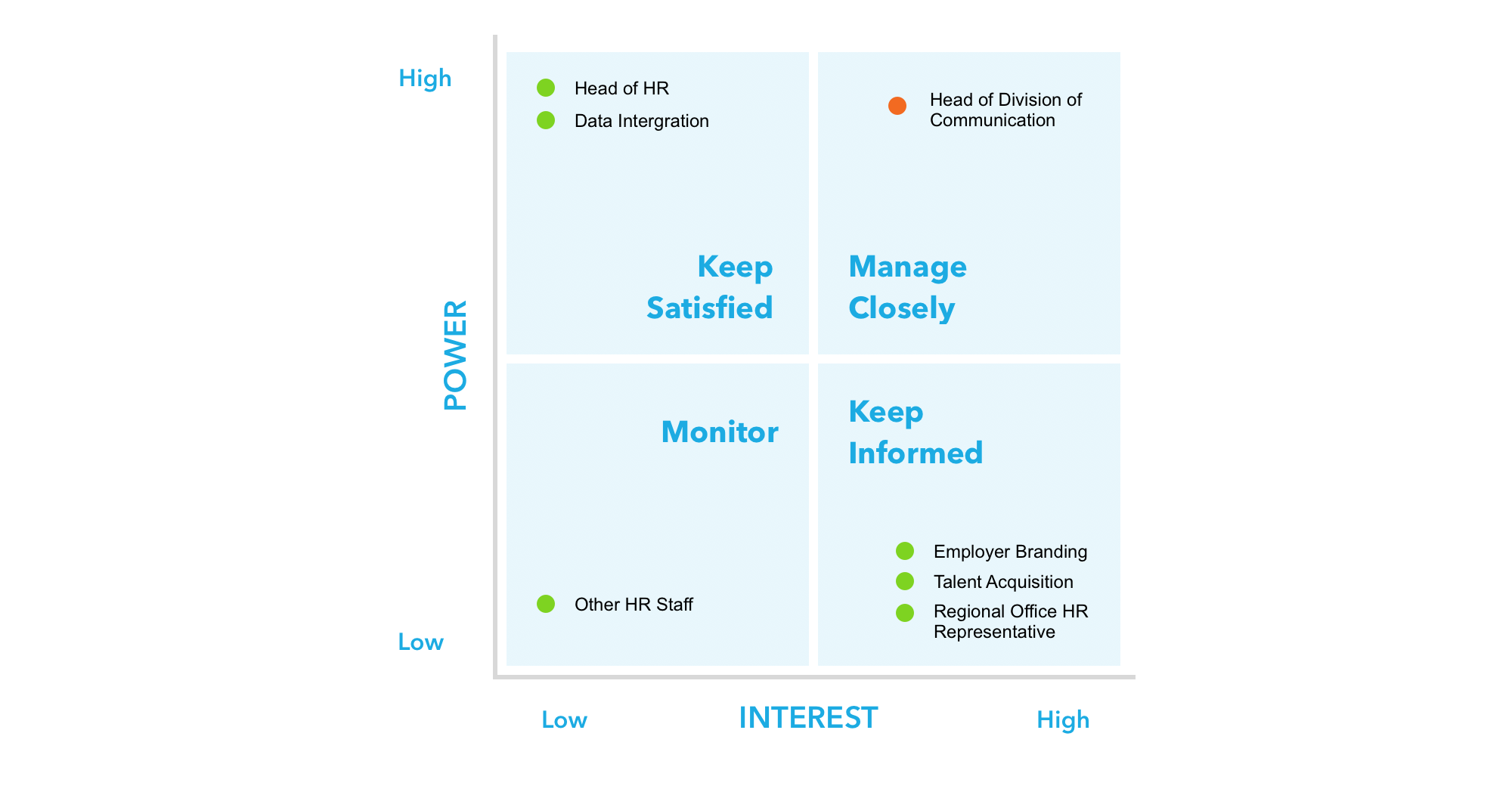
During the initial business requirement phase, I realized that most staff had a common misconception about design – they considered this project is no more than “beautify” the current website. In addition, because of UNICEF’s noble mission and high-impact projects around the world, they tend to hold a very organization-centric view on talent recruitment, which is very likely to hinder upcoming user research work and make the final design proposal a difficult sell.
To pave the road for the next phase of the project, I organized a Brown Bag Lunch Session to advocate the human-centered design approach. 30+ people attended the session, including some senior management in the division. The session was well received and helped to build my credibility and to gain rapport with stakeholders.
User Research
Survey Design
Given the constraints on acquiring system data directly, I resorted to conduct multiple surveys from scratch in a span of two weeks to meet the overall project timeline. Based on the recruitment funnel and UNICEF unique staff categories, I designed four sets of different but logically connected surveys for prospects, candidates and staff (both member and non-member). In addition, to ensure the survey response rate while covering a variety of participant backgrounds, I leveraged LinkedIn to identify the prospect profiles that are relevant but diverse.

Card Sorting and Task Scenarios
UNICEF’s current site structure and vacancy filters resemble its internal structure. Given its gigantic scale – 34 functional areas across 160+ offices around the world – prospective candidates frequently complain about the confusing information architecture and navigation. Especially for candidates without any working experience inside of the UN system, they are often frustrated by the terms and jargons sprinkled across different pages and don’t know where to start.
To better understand the mental model of prospective candidates, I had in-depth interviewed with 10 participants that have diverse backgrounds, limited knowledge about UN system, and different motivations seeking career opportunities in UNICEF. Each session last about 30-45 minute long, including an open-ended card sorting exercise and 3 task scenarios that requires the participants to think aloud while navigating the current website to seek specific information.
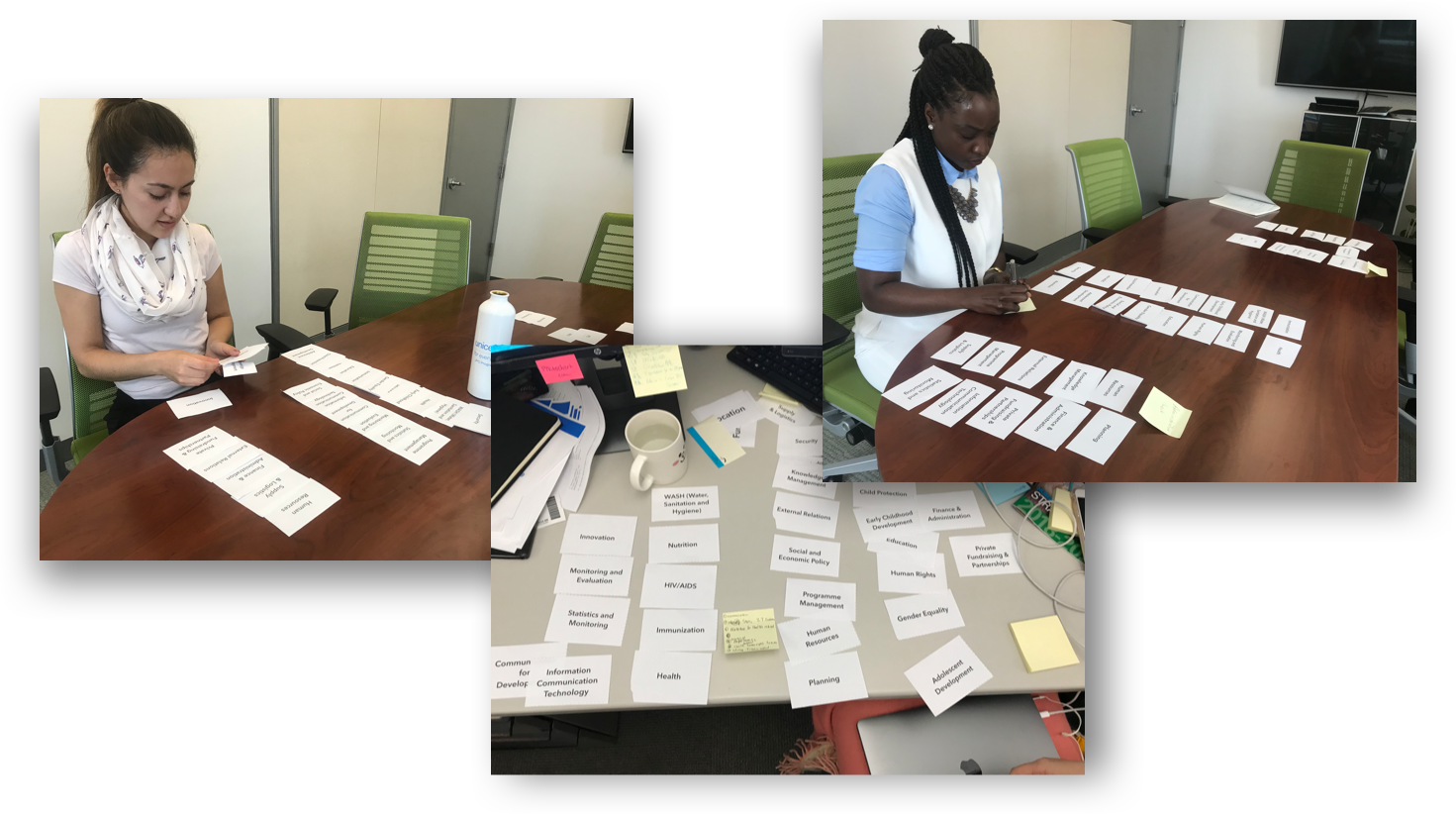
Landscape Audit
Rather than benchmarking to other UN agencies or international Non-For-Profit organizations, I extended the scope of best practice research to private sector, which is known for their heavy investment in building employer brands and attract diverse top talents around the world. I also included military examples, because a sizable portion of UNICEF positions target emergency areas and use a set of organization-specific vocabulary to communicate job specifications. The extensive but clearly structured best practice summary not only provided a variety of design inspirations, but also effectively reinforced the importance of human-centered design among stakeholders.

Click here for find the full presentation.
Persona and User Journey Mapping
After synthesizing thousands of data points from the four surveys, I created three personae and user journey maps for prospective candidates that vary in their seniority levels, function areas, and personal priorities. Although this is a step the stakeholders are not familiar with, my data-driven approach promised more credibility to the work.
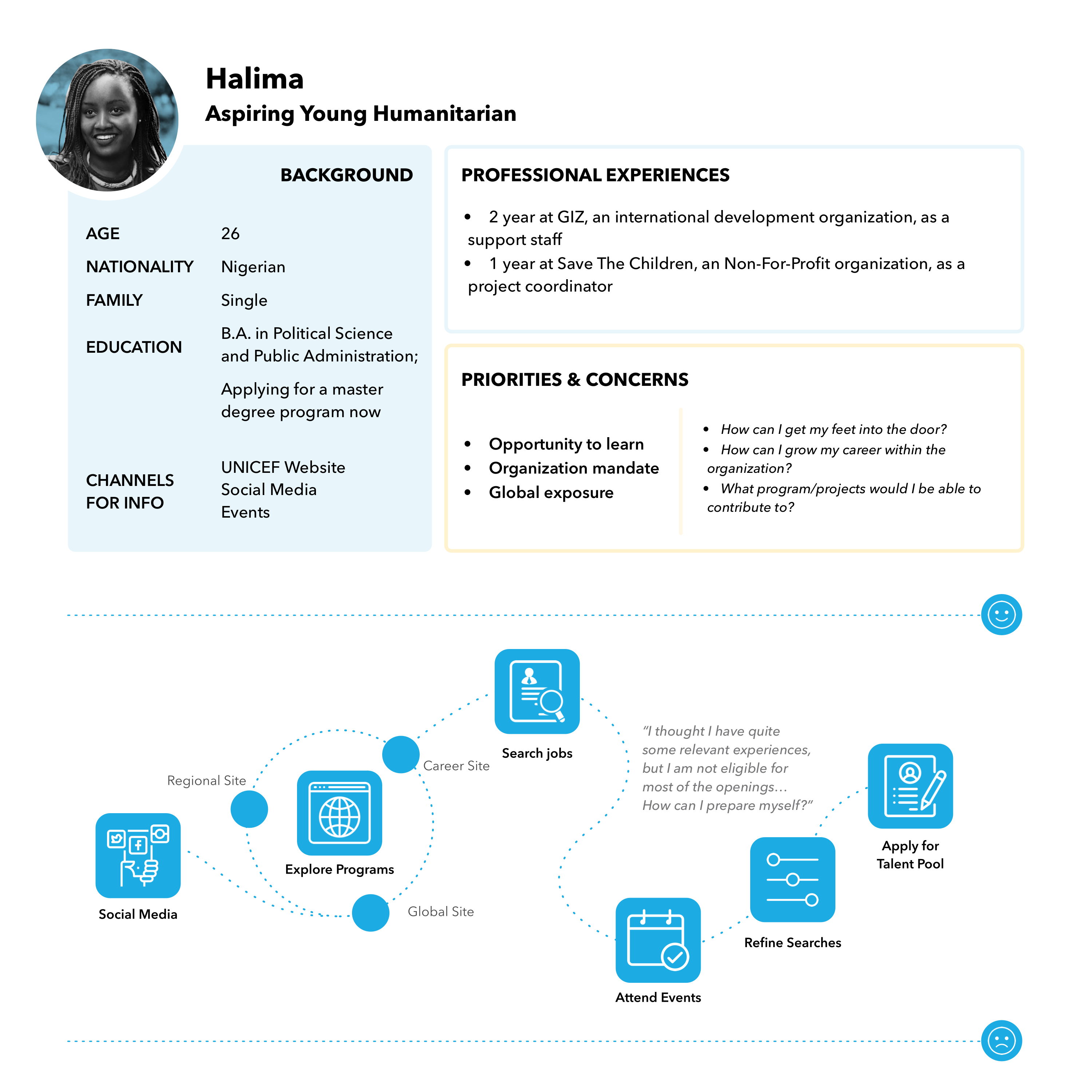
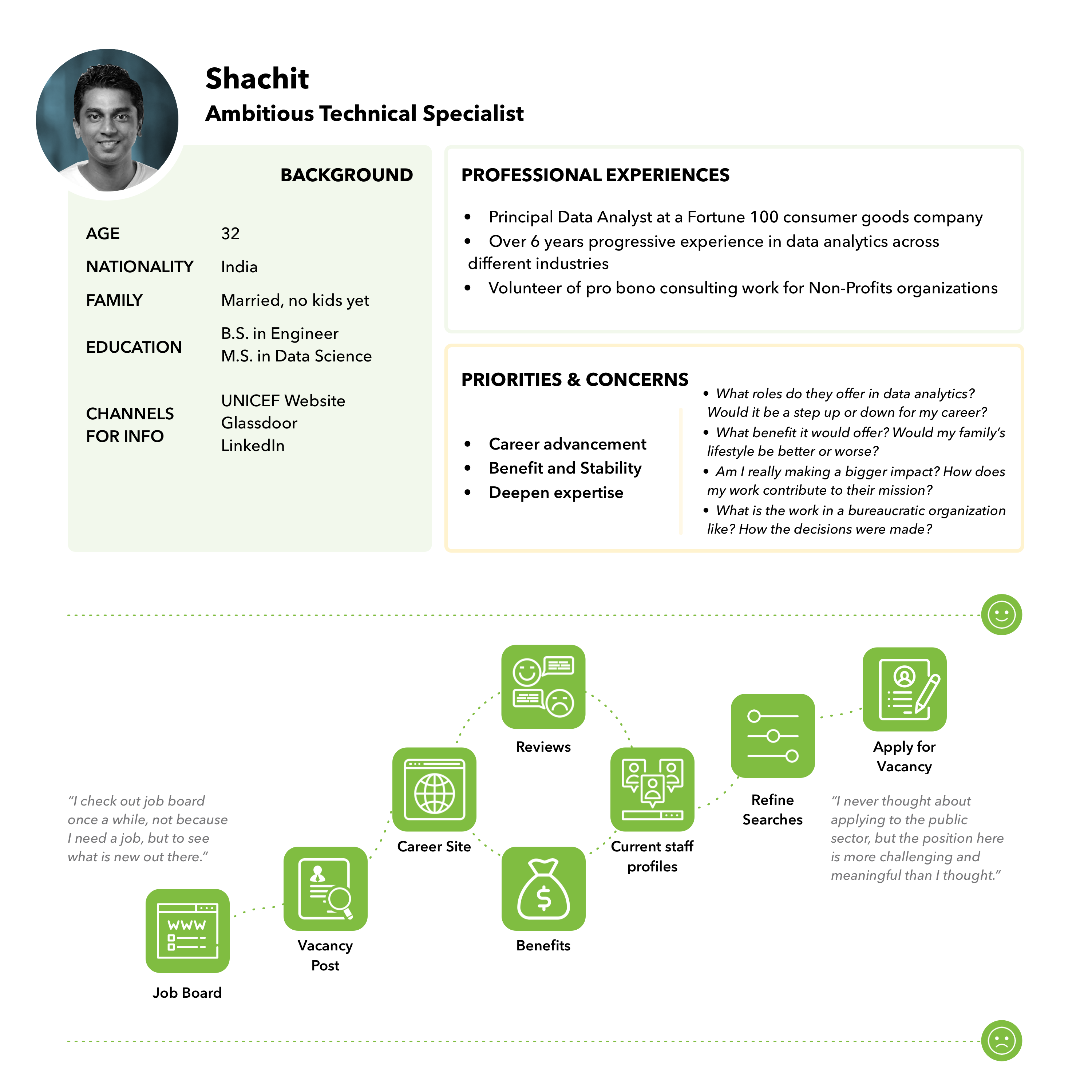

Prototype
Using Sketch and InVision, I created the seven main screens of the new career site. All the task force was invited to leave comments to on InVision. Dozens of constructive feedbacks were gathered, from wordings on the tab labels to the feasibility of certain feature implementation. The creation and revision process took less than a week to complete.
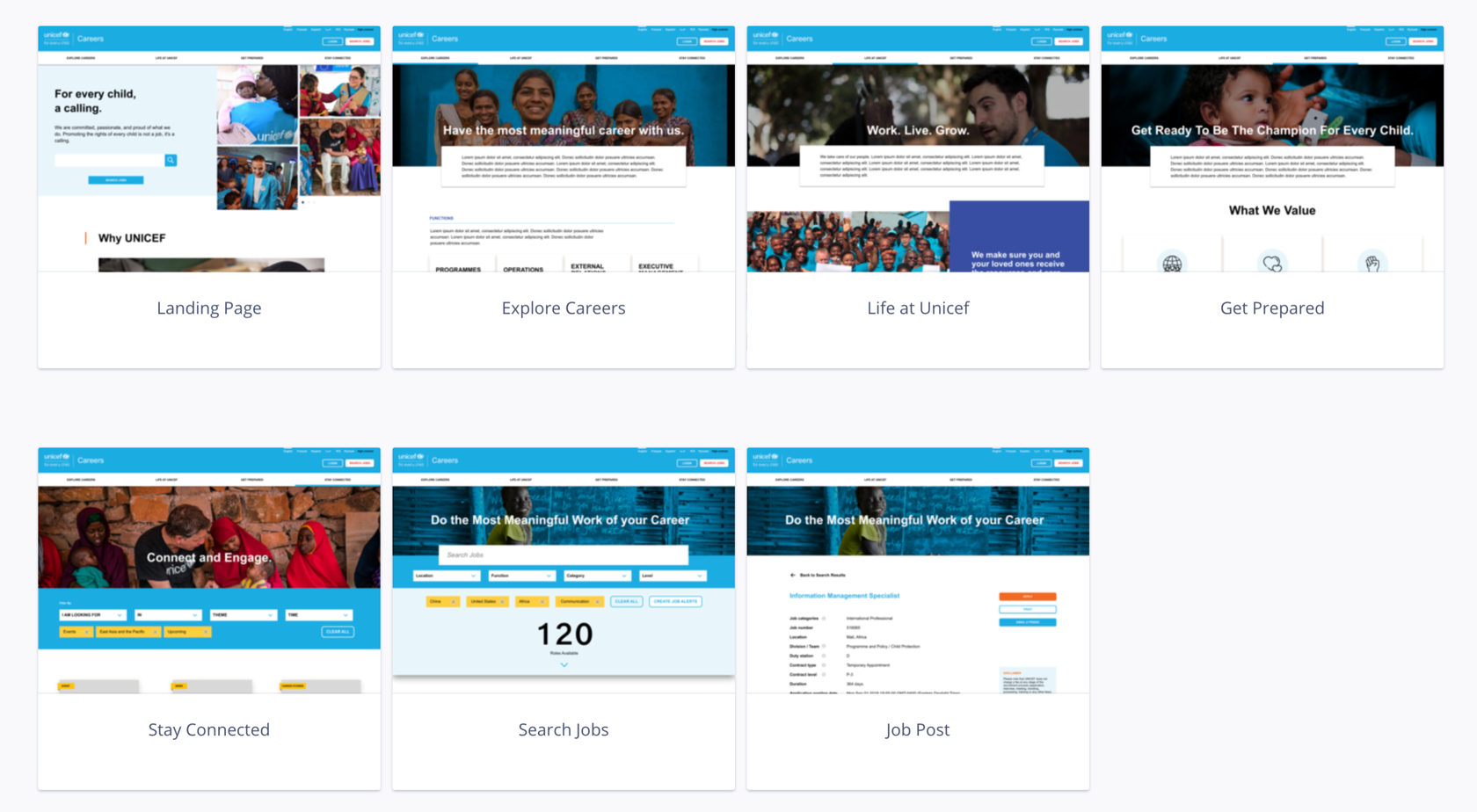
Content Creation Guidelines
As UNICEF’s job postings are sourced from their regional HR offices around the globe, it is crucial to ensure the quality and consistency of the content presented on this revamped site. Based on my research on regional offices’ current practices, I created a set of Content Creation Guidelines to address the most common issues. The regional HR offices will use the layout template presented in the wireframe, and refer to this guideline when fill in specific of job information.
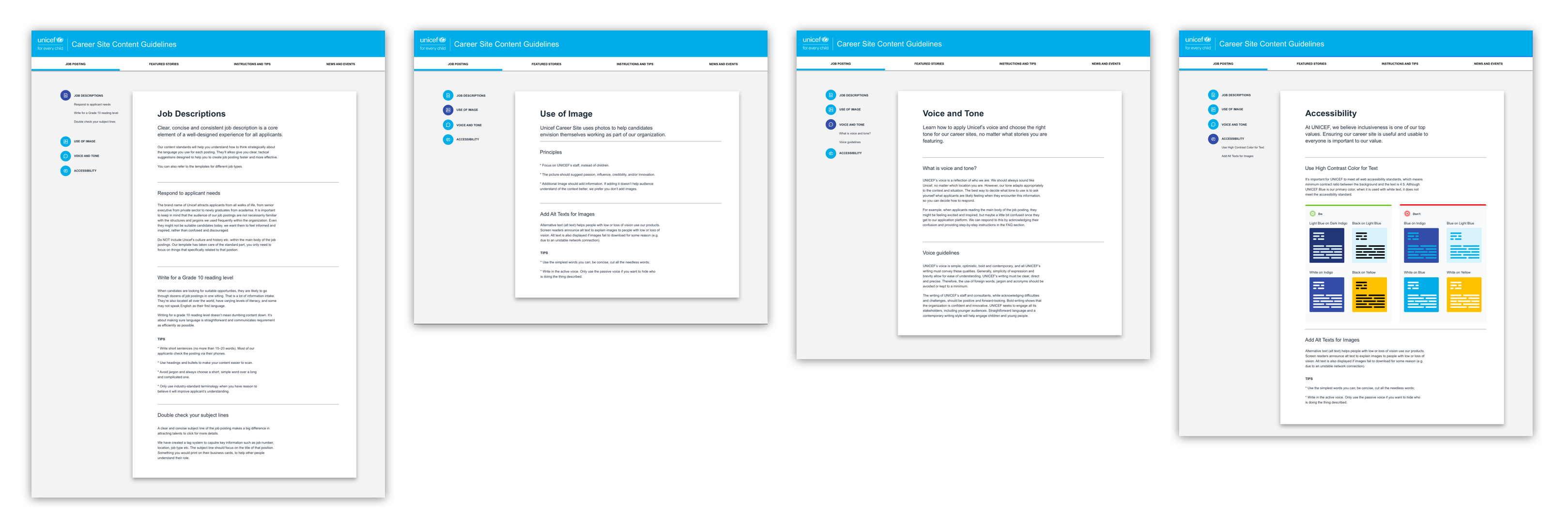
Next Steps
Currently, the global task force is collecting and drafting up-to-date content based on the content modeling guideline suggested by the prototype. Implementation work will be coordinated between the HR department with the internal IT resources. Look forward to visiting the brand new UNICEF Career Site by the end of 2018.

Supported by Division of Human Resources at UNICEF New York Headquarter
Supervised by Professor Marcos Méndez Sanguos




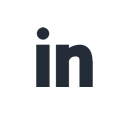


Responses
No Response Found